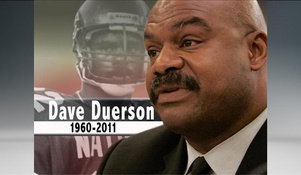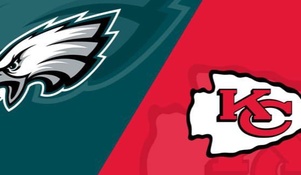It's Time for Parity in the NFL Pension Plan
“Parity” is the phrase that is often used to describe the model that has made the NFL the juggernaut it is today - and one of the key reasons why the NFL Commissioner and the NFL owners are projecting an increase in revenues from 9 Billion to 27 Billion by the year 2027.
By equally sharing revenues, establishing a salary cap and designing a system that enables bad teams to get better via the draft, the owners have found a way to keep smaller market teams competitive and the fan base excited and willing to spend their hard earned money on the game. Under this system of parity, fans are always hopeful that their teams are just a few good players away from being Super Bowl contenders.
I love parity - and I think it would be fantastic if former players had some parity in respect to the NFL Pension Plan.
Before I begin to discuss this issue, I want to acknowledge that there is no legal requirement for the NFL and NFL Players Association to increase the pensions of former players. If anything, corporations in the U.S. have done everything in their power to reduce and eliminate the pensions of their workforce. But, then again, the NFL is a different beast.
Representative John Conyers Jr. said the issue of brain injuries in football warranted federal scrutiny because “the N.F.L. is a monopoly whose existence was legislatively sanctioned,” referring to the antitrust exemption for broadcasting that has helped the league grow into a multibillion-dollar operation. As such, the U.S. Congress feels it has some oversight of the League and from time to time they have come to the aid of former players and have conducted hearings that were intended to hold the NFL accountable for its actions - and in some cases worked to level the playing field. The NFLPA has also incurred the wrath of Congress. The Executive Director, DeMaurice Smith was criticized for the NFLPA's sluggishness in addressing the issue of concussion risks years ago and for not better educating its players.
In his testimony before a Senate Committee in 2007, Commissioner Goodell said “The men who played professional football decades ago deserve our respect and recognition, and their contributions to our game must never be overlooked.” The NFL Players Association Executive Director DeMaurice Smith stated, “We have a moral obligation to the retired players, we have a fiduciary obligation to the retired players. That obligation has to be both in words and deeds. If you fail in either one, you fail.”
Both the NFL and the NFLPA have made statements about helping the pioneer players of professional football. I can only speak for myself when I say I truly appreciate the increases that have been made to my pension. But, like a lot of other players, I believe that more can be done to bring parity to the pension plan. For one thing, I have argued for many years that every former player that has 3 credited seasons should be vested in the pension plan.
Former players that are vested in the NFL Pension Plan have now begun to make arguments for more parity.
Additionally, the wives of Pro Football Hall of Fame players recently sent a letter to Roger Goodell asking him to meet with them and their husbands to discuss the issue of sub-par pensions for the older generation of players.
As I have pointed out in previous articles, active player pensions will be increased to $760 per credited season by 2018, whereas the vast majority of former players (pre-1983) are receiving less than half that amount - about $358 to $374 per credited season - when both the Bert Bell/Pete Rozelle Pension and the Legacy Benefit are factored into the equation.
It's true that many players took their pensions early - before age 55 - and by doing so, significantly reduced their payments. The NFLPA saw that this was a bad idea and stopped allowing it for players that have credited seasons after 1992. Why did players take their pensions early? Most will tell you that they needed the money just to make ends meet........and not because they made bad business decisions, or got divorced, or were just lazy and didn't work, as Drew Brees suggessted back in 2010.
It is important to note that the active players also have two other retirement type benefits – the Annuity Plan and the Second Career Savings Plan - not to mention salaries that have shot through the roof since 1993. You can see a description of the benefits under the new CBA at this link, along with an estimate of what they would be entitled to if they were fortunate enough to play over the 10 year course of the agreement.
Back in 2010, during the heat of CBA negotiations, both the NFL and NFLPA talked a good game, but in the end, former players didn’t get close to what we were hoping for when the dust settled and the 2011 CBA was signed. I wrote about this in an article posted at Fourth and Goal entitled the Legacy Fund Resolution. Here is an excerpt from the article:
At the 2010 NFL Players Association Convention in Maui, a resolution entitled Former Player Members Expression of Support was passed by the active players. The resolution stated the following: [RESOLVED, that the NFLPA Former Player membership expresses its full support for the active NFLPA membership in their demand during their CBA negotiations that the NFL and its member Clubs establish a Legacy Fund for Former Players to be funded by 2% of the profits generated by the NFL and its member clubs each year; and that the Legacy Fund be used to increase the pensions of all Former Players who have a credited season before 1993 and who are currently receiving a pension by an additional $2,000 per month.]
As most of you know, the NFL and the NFLPA have been dividing revenues since the 1993 CBA. It has always fluctuated around a 50/50 split. Under the aforementioned resolution, the NFLPA wanted the owners to take all the money out of the NFL's 50% share of revenues, but eventually the two sides agreed that the money would come from the savings accrued from instituting a rookie wage scale - that’s how they got the $620 million to fund the Legacy Benefit. Unfortunately, only a very small number of the 4,700 players that were affected by the Legacy Benefit saw a $2,000 per month increase in their pensions. Most players received less than a $1,000 a month increase in their pension.
There have been numerous ideas about how to equitably fund our pensions. We have talked about an annual cost of living adjustment, but I believe the idea of using 2% of revenues (as recommended in the 2010 Active Player Resolution) is the best idea – with the stipulation that the 2% come from both the NFL and NFLPA. Hall of Famer Ron Mix, myself and several other player advocates have discussed the 2% solution as an approach that could bring parity to the pension plan.
Under the 2% solution, we would only receive pension increases if the revenues continued to increase. Doesn’t that make sense?
For the sake of argument, if the NFL owners are successful in reaching their goal of 27 billion by the year 2027 - and somehow we were able to get the pension plan tied to that increase - we would be looking at an enormous increase in the pension plans of not just the older former players, but ALL players!
As former players we have always been used by the NFL to market the game and bring new generations of fans into the fold. Many of us are actively involved in supporting the teams we have played for. We do tremendous good in our communities under the banners of the NFLPA Chapters and the NFL Alumni Chapters, but let’s not forget who is the greatest benefactor of all our efforts – it’s the NFL.......... and we are their Bannermen!
The NFL and NFLPA have numerous programs and services that help former players and they continue to spend millions of dollars on research programs that will show them what we already know – that the older generation of players are “messed up” physically, mentally and emotionally. Why? Because we didn’t have the necessary supports and protections in place from our union or the league during the time we played.
All these NFL, NFLPA and NFL Alumni programs and services are fine and dandy, but I think most guys will say that “cash in their pocket” – via an increase in their pensions – is better than all the other programs combined.
What say you…Alumni Bannermen?






